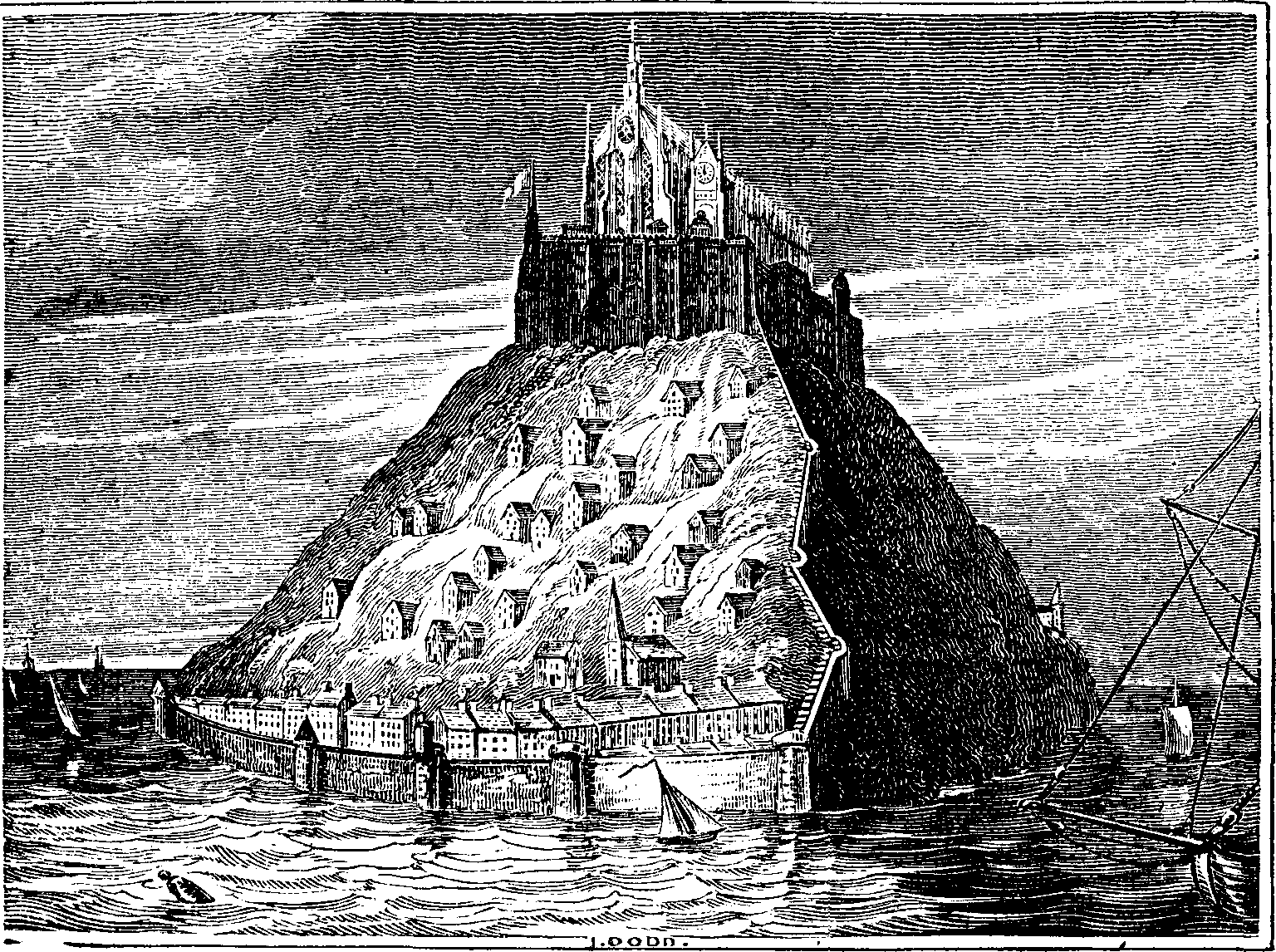THE MIRROR
OF
LITERATURE, AMUSEMENT, AND INSTRUCTION.
| VOL. XVII, NO. 477.] | SATURDAY, FEBRUARY 19, 1831. | [PRICE 2d. |
MOUNT ST. MICHAEL, NORMANDY.
The interest attached to this extraordinary place is of so populara character as fully to justify its introduction to our pages. It issituate at the southern extremity of the ancient province of Normandy,a district of considerable importance in the early histories of Franceand England. The "Mount" is likewise one of the most stupendous ofNature's curiosities, it being one mass of granite, andreferred to by geologists as a fine specimen of that primary orprimitive rock; or, to speak untechnically, of that rock "which is mostwidely spread over the globe in the lowest relative situation," andwhich contains no remains of a former world.1 St. Michael's thereforestands pre-eminently in the sublime philosophy of Nature. It figuresalso in the page of man's history: its early celebrity is recognised inthe chronicles of olden France and England; and it promises note in thehistory of our own times; since to this monastic spot will the politicalbalance of France, in all probability, exile the person of the ambitiousPolignac, ex-minister of France. The reader will perhaps suspect thepolitical concatenation of Lulworth Castle, the Hotel de Ville, and thePalais Royal in our last volume; and the Prison of Vincennes and MountSt. Michael in the present. Instead of catching "the manners living asthey rise," we appear to be looking out for crowns and ministersheadlong as they fall.
St. Michael's is in that portion of Normandy which is not often visitedby English tourists. One of its recent visitors was Mrs. CharlesStothard, wife of the distinguished artist, who, in 1820, publisheda narrative of her journey in, the autumn of 1818. Mrs. Stothard'sdescription of the "Mount" is dated from Avranches, a coast town of someconsequence, not far from Caen. Speaking of the delightfully situatedtown of Avranches, the fair correspondent says,
"Beyond, in the midst of the sea, arises 400 feet above the surface ofthe water, the majestic rock of Mount St. Michael, and near it another,but smaller rock, called the Tombalaine.[pg 130]In the distant and blue horizonappears the long and extending land of Britanny, mingling with thesurrounding atmosphere, from which it is alone distinguished bya faint and uncertain line, that, like the prospect of our futureyears, impresses the mind with a deeper interest from its distant andimpenetrable form. Mount St. Michael is a league in circumference; insome parts of the rock is perpendicular; it is flooded entirely at highwater, but when the tide is out, the rock may be approached by thesands; some danger, however, attends the passage to those who are notperfectly well acquainted with the track, as many quicksands intercept,where travellers have frequently been lost.
"There is a small town on Mount St. Michael. The castle, which stands att
